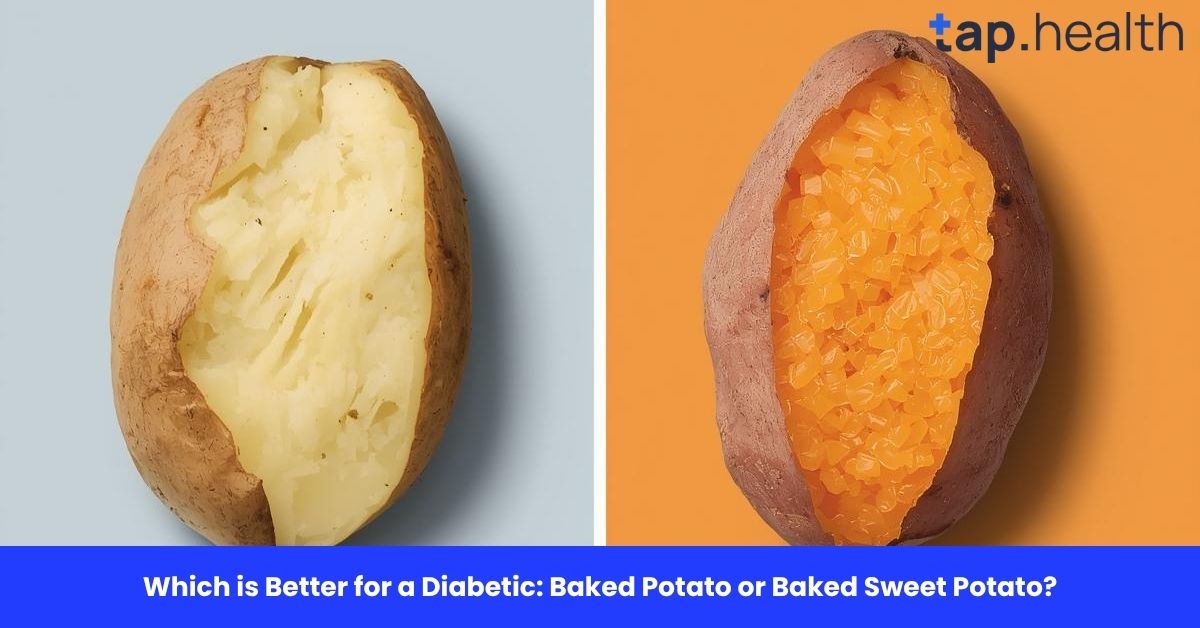When it comes to managing diabetes, making the right food choices is crucial. Many people with diabetes often seek out foods that help stabilize blood sugar levels without causing spikes or crashes. One such food that frequently comes up in discussions about healthy eating is oats, especially Quaker Oats, a popular brand known for its quick and easy oatmeal.
But is Quaker Oats good for diabetics? The answer is yes, but with a few important considerations. Oats, including those from Quaker, are generally beneficial for people with diabetes due to their high fiber content, low glycemic index, and heart-healthy nutrients. However, how oats affect blood sugar can depend on the type of oats and how they are prepared.
In this blog post, we will explore the benefits and risks of Quaker Oats for people with diabetes, offer practical tips for including oats in your diet, and answer some of the most common questions about oats and diabetes.
The Nutritional Breakdown of Quaker Oats
To understand whether Quaker Oats are good for diabetics, let’s first examine their nutritional profile. Quaker Oats are a whole grain, which means they provide a variety of nutrients that contribute to overall health.
1. Carbohydrates and Fiber
Oats are rich in carbohydrates, but they also contain a significant amount of fiber, particularly soluble fiber called beta-glucan. Fiber plays a crucial role in managing diabetes because it helps slow down the absorption of sugar into the bloodstream, preventing sharp spikes in blood glucose levels.
- 1/2 cup of cooked Quaker Oats contains about 14 grams of carbohydrates, with 2 grams of fiber.
- The soluble fiber in oats helps regulate blood sugar and can improve insulin sensitivity, which is essential for managing diabetes.
2. Glycemic Index (GI) and Glycemic Load (GL)
The glycemic index (GI) measures how quickly a food raises blood sugar levels. Foods with a low GI (55 or below) cause a slower rise in blood sugar, while high-GI foods lead to rapid spikes.
- Quaker Oats have a low to moderate GI, making them a better choice for people with diabetes compared to many processed breakfast foods.
- Rolled oats (Quaker Oats) typically have a GI of around 55.
- This means they don’t cause rapid spikes in blood glucose, and they provide a more steady source of energy.
3. Vitamins and Minerals
In addition to fiber, Quaker Oats are rich in several vitamins and minerals that contribute to overall health, particularly for those with diabetes.
- Magnesium: Helps regulate blood sugar and improve insulin sensitivity.
- Iron: Important for transporting oxygen in the blood.
- B Vitamins: Support energy production and brain function.
How Quaker Oats Help Manage Blood Sugar
Now that we understand the nutritional benefits of Quaker Oats, let’s look at how they can help manage blood sugar levels, which is the most important consideration for diabetics.
1. Slow Release of Sugar into the Bloodstream
As mentioned earlier, the fiber in oats helps slow the absorption of sugar into the bloodstream, which helps prevent sharp blood sugar spikes. This slow release of glucose provides a steady and more controlled energy source throughout the day.
- Beta-glucan, the soluble fiber in oats, has been shown to improve insulin sensitivity and reduce overall blood sugar levels in people with Type 2 diabetes.
2. Improved Insulin Sensitivity
Oats contain soluble fiber, which has been linked to improvements in insulin sensitivity. Insulin resistance is a key factor in Type 2 diabetes, and improving insulin sensitivity is a crucial goal for managing the condition.
- Research has shown that people with diabetes who include oats in their diet may experience improved insulin function, helping their bodies use insulin more effectively.
3. Heart Health Benefits
Diabetes increases the risk of heart disease, and consuming foods that are good for heart health is especially important. Quaker Oats are beneficial for cardiovascular health because of their high fiber content and low glycemic index.
- Oats help lower LDL cholesterol (the “bad” cholesterol) and increase HDL cholesterol (the “good” cholesterol), which reduces the risk of heart disease—a common complication of diabetes.
Types of Oats and Their Impact on Diabetes
There are several types of oats available, and some may be more suitable for diabetics than others. Let’s explore the different types of oats and their glycemic impact.
1. Instant Oats (Quaker Instant Oats)
Instant oats are the most processed form of oats and cook very quickly. They are often used in quick breakfast recipes, but their glycemic index tends to be higher than rolled oats due to the processing involved.
- Instant oats have a GI of 65–75, which is considered moderate to high. This means they can cause a faster increase in blood sugar than rolled oats.
While convenient, people with diabetes should be cautious with instant oats and may want to avoid adding high-sugar toppings, such as sweeteners or syrup, as they can increase blood sugar levels.
2. Rolled Oats (Quaker Rolled Oats)
Rolled oats are a less processed form of oats and have a lower GI than instant oats. These oats are steamed and then flattened, making them ideal for diabetics who want a slower release of sugar into the bloodstream.
- Rolled oats typically have a GI of around 55, which makes them a great option for managing blood sugar levels.
- Whole oats are also more filling and nutrient-dense, providing better overall health benefits.
3. Steel-Cut Oats
Steel-cut oats are the least processed form of oats. They are whole oat groats that have been chopped into pieces. Steel-cut oats have the lowest glycemic index and are the most beneficial for controlling blood sugar.
- Steel-cut oats have a GI of 42, making them a great choice for those with diabetes.
While steel-cut oats take longer to cook, they are a great option for anyone with diabetes who wants a slow, steady release of glucose.
How to Incorporate Quaker Oats into a Diabetic-Friendly Diet
Incorporating Quaker Oats into your diet can be a great way to manage diabetes, but it’s important to prepare them in a healthy way. Here are some tips for making oats diabetic-friendly:
1. Choose the Right Type of Oats
As discussed, rolled oats or steel-cut oats are the best options for diabetics because they have a low glycemic index. Instant oats, on the other hand, are more processed and may cause a faster spike in blood sugar.
2. Avoid High-Sugar Additions
While Quaker Oats themselves are healthy, many pre-packaged oatmeal varieties contain added sugar or sweeteners. Opt for plain oats and add your own natural sweeteners, such as a small amount of honey, stevia, or cinnamon.
- Tip: Add fresh fruits like berries or a few nuts for added flavor and nutrition without spiking your blood sugar.
3. Balance Your Meal
Pair your oatmeal with a source of protein or healthy fats to further stabilize your blood sugar. For example, you could add:
- Greek yogurt: Adds protein and probiotics, which may support gut health.
- Nuts or seeds: Offer healthy fats and protein to balance the meal.
- Chia seeds or flaxseeds: Provide additional fiber and omega-3 fatty acids.
Real-Life Scenario: How Diabetics Can Enjoy Quaker Oats
Example: Sanjay’s Story
Sanjay is a 40-year-old man with Type 2 diabetes. He was concerned about his breakfast options because he didn’t want to raise his blood sugar levels too much. After speaking with his dietitian, Sanjay decided to incorporate Quaker rolled oats into his morning routine. He prepares his oats with water, adds a handful of berries for sweetness, and tops it with a tablespoon of chia seeds. His blood sugar remains steady, and he feels full until lunchtime.
Example: Meera’s Approach
Meera, a 55-year-old woman from Chennai, has been managing Type 1 diabetes for years. She loves oats but used to struggle with blood sugar fluctuations after eating oatmeal. After switching to steel-cut oats, she noticed a more gradual rise in her blood sugar. Meera pairs her oats with a small serving of almond butter for extra protein and healthy fats, which helps keep her blood sugar levels in check.
FAQ: Quaker Oats and Diabetes
Q: Can diabetics eat Quaker Oats every day?
Yes, diabetics can eat Quaker Oats every day, but it’s essential to choose the right type of oats (such as rolled oats or steel-cut oats) and avoid sugary add-ins. Monitor blood sugar levels to determine the best serving size.
Q: Are instant oats bad for diabetics?
Instant oats have a higher glycemic index compared to rolled or steel-cut oats, meaning they may cause a quicker rise in blood sugar. If you enjoy instant oats, try to limit the portion size and pair them with protein or healthy fats.
Q: How do oats help control blood sugar in diabetics?
Oats are rich in fiber, particularly beta-glucan, which helps slow down the absorption of sugar into the bloodstream, reducing the risk of blood sugar spikes.
Q: Can I add sugar to my oatmeal if I have diabetes?
It’s best to avoid adding sugar to your oatmeal, as it can cause rapid blood sugar increases. Instead, opt for natural sweeteners like cinnamon or fresh fruits.
Conclusion
Quaker Oats can be a healthy and beneficial addition to a diabetic-friendly diet, especially when consumed in moderation and prepared wisely. The key benefits of Quaker Oats include their high fiber content, low glycemic index, and heart-healthy nutrients. By choosing the right type of oats and balancing them with protein and healthy fats, diabetics can enjoy a delicious, blood sugar-stabilizing meal.
Always consult with a healthcare provider or dietitian to tailor your diet to your personal needs and blood sugar goals.


